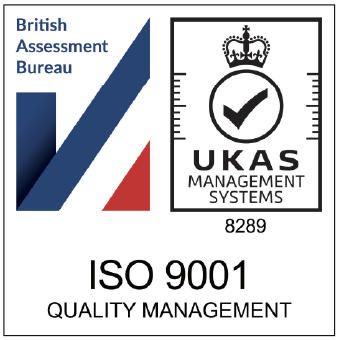Creating and maintaining an effective inventory control system is a crucially important part of running an effective, and profitable, eCommerce business. So, if you want to build and scale your eCommerce business your first priority should be inventory control. Read on to find out everything you need to know about inventory control…
What is inventory control?
Let’s kick things off with a definition. What exactly is inventory control (sometimes also referred to as inventory management)?
Here’s the short answer – inventory control is an organised, systematic approach to sourcing, storing, tracking, shipping, valuing and reporting on your inventory.
As you’ve probably already guessed from the tone of this article, inventory control is a massively important part of running a successful eCommerce business. Nail your approach to inventory control and you’ll be opening up efficiencies, boosting your profit margins, reducing waste and more.
Now, for the longer answer where we take you through the individual aspects of inventory control you should be addressing in your business.
What is involved in inventory control?
Before you can begin to optimise your inventory control processes, you should first build an understanding of what’s involved in a high-performance inventory management system.
Here are the key things you should be looking at:
- Inventory valuation.
- Types of inventory.
- Inventory forecasting.
- Auditing your inventory.
- Inventory storage control.
- Handling.
- Shipping and fulfillment.
- Inventory reporting.
These are the essential elements that you should include in your inventory control system. Include all of these things, in the right way, and you’ll have an inventory control system that’ll help your eCommerce business thrive.
Creating an inventory control system for your eCommerce business
So far then, we’ve looked at the essential elements that should be included in an inventory control system. Great. But, let’s take a deeper dive into each of these essentials and see what they’re all about…
Inventory valuation
For many eCommerce businesses, inventory is their biggest asset. They’ll typically have invested large sums of money in their inventory and as such need to ensure that it’s accounted for.
By implementing proper inventory valuation methods you’ll be able to calculate the Cost of Goods Sold (COGS) and your overall profitability.
Additionally, holding an accurate picture of your inventory value will help you decide if you need to apply for lines of credit or other types of funding should you require it.
Guide – read our complete guide to inventory valuation methods here.
Types of inventory
The word inventory can cover a whole gamut of different products, raw materials, or components.
When creating your inventory management system it’s important that you drill down into what types of inventory you have. In other words, your system shouldn’t view inventory as a single monolithic block. Instead, you should be able to segment your inventory so that it’s easier for you and your team to identify different parts of your inventory.
To help you define your different types of inventory, here are some common examples of inventory types:
- Raw materials/components – if you manufacture your own goods or products, then you’ll need to include the raw materials/components needed to manufacture them within your inventory.
- Finished goods – this is the most common form of inventory for many eCommerce stores. Finished goods are usually supplied via a third-party manufacturer and stored in an eCommerce store’s warehouse before being sold and shipped to customers.
- Anticipated/smoothing inventory – this is forms of inventory stocked in case of a surge in demand. For example, you may be an outdoor equipment supplier that holds some smoothing inventory of budget tents ahead of the festival season.
There are other forms of inventory, but the ones listed above are the most common. Hopefully, it’s now clear why it’s important to define the different inventory types you hold.

Inventory forecasting
How much inventory do you think you’ll need to fulfill future orders? That’s the question that inventory forecasting will help you answer.
Inventory forecasting is one of the most difficult, yet important, parts of an effective inventory control system. Fail to stock enough inventory and you run the risk of being unable to fulfill orders, stock too much inventory and you’ll have your money tied up in unsold products.
A good system of inventory forecasting uses historical sales data and other macro-level trends to help you make an educated prediction as to how much inventory you will need over your next peak sales period.
Inventory forecasting can be done on a quarterly, bi-annual or yearly basis (or intermittently). The best inventory forecasting cycle for your particular eCommerce business will depend on the industry vertical and markets you operate in.
Guide – you can find out more about inventory and demand forecasting here.
Auditing your inventory
Do you know what the state of your inventory is at any particular time?
An inventory audit will help you to check that your stock levels are accurate and align your eCommerce website’s stock levels with your actual inventory.
So, a thorough analytical audit of your inventory should be part of your inventory control system. Most importantly, including auditing within your inventory control will ensure that your financial records and actual count of goods in stock match – preventing you from making costly fiscal errors!
There are multiple different ways of conducting an inventory audit:
- Spot checks – counting inventory in person at your warehouse to see if it matches what’s written in your formal records.
- Third-party audits – you can employ a third-party consultant to carry out an inventory audit on your behalf, thus providing an independent assessment of your inventory position and the accuracy of your records.
- Cut-off analysis – this involves completely pausing your operations (i.e. not receiving or shipping inventory) whilst you carry out a physical count of your inventory.
- Invoice matching – do your invoices issued to customers match the amount and value of inventory shipped from your warehouse? This type of audit can be conducted on a random basis, or systematically by an independent auditor.
No matter which of those methods you choose, ensure your inventory is audited on a regular basis.
Inventory storage control
When inventory is just sitting on a warehouse shelf it’s costing an eCommerce business money.
To ensure that inventory is only stored for as long as absolutely necessary, you need to include inventory storage control within your broader inventory control strategy.
Inventory storage control optimises inventory storage, meaning that only absolutely necessary units/products are kept on hand. This means you don’t have your capital tied up in hundreds or thousands of items that’ll be sat on a shelf for months.
There are two main types of inventory storage control system:
- Perpetual inventory system.
- Periodic inventory system.
Perpetual inventory system
Under a perpetual inventory system, your inventory records are updated every time pieces of inventory are received, shipped, moved from one location to another, or scrapped.
This form of inventory control provides you with as close to a ‘real time’ view of your inventory as is possible.
For eCommerce businesses that have fast-moving inventory, the perpetual inventory system is generally the preferred option.
Periodic inventory system
With a periodic inventory system, your inventory records are only updated on a periodic basis.
Typically, an organisation will set out defined periods of time (e.g. every quarter) where they will undertake a review of their inventory and update their inventory records. As you can imagine though, this form of inventory control doesn’t give you as much visibility on the state of your inventory at any one time.
Handling
How do you receive, book-in, quality assess, and store your inventory?
Your inventory management system should include detailed end-to-end processes on how you handle your inventory. From the moment you receive your inventory to the second it’s handed over to your courier for delivery to a customer, you should have defined processes to ensure that your overall handling process is as efficient as possible.
Optimise your handling with 3PL
Running a warehouse and dealing with reception, quality assessment and storage of inventory is a big job. For many eCommerce businesses it makes sense to outsource the handling of their inventory to a company such as 3PL.
At 3PL it’s our full-time job to optimise the handling of inventory. We take care of it so you can focus on what you do best – growing your eCommerce store.
Find out more about 3PL’s handling and inventory storage solutions here.

Shipping and fulfillment
Not only should your inventory management system include processes for the storage of inventory, but it should include detailed, efficient processes for the picking, packing, shipping and fulfillment of your inventory too.
As with handling, the easiest route for many eCommerce businesses is to outsource the shipping and fulfillment of their inventory to 3PL.
Multichannel eCommerce fulfillment
If you are offering your products across multiple channels (e.g. your website, Amazon, eBay and others), fulfillment can quickly become a complicated nightmare – one that can actually lose you money if you don’t get it right!
But, if you partner with the right shipping and fulfillment partner, they can take away these logistical headaches and also help power your eCommerce business to the next level of growth.
Here’s a great success story of how 3PL helped a world leader in textile manufacturing achieve multichannel growth.
Inventory reporting
Data matters. Your inventory control system should include detailing reporting on key inventory data points, so you can continually make informed decisions on your inventory.
There are various forms of inventory reporting that you may choose to use. Which one will work best for you very much depends on the type of inventory you hold and the markets/industries you operate in.
Beginning inventory
Beginning inventory is the total value of your available inventory at the beginning of a defined accounting period. Beginning inventory will provide you with data that’s useful for balance sheets, tax reports and (internal) accounting documents.
Beginning inventory can be calculated using the following formula:
(COGS + Ending Inventory) – Purchases = Beginning Inventory
Ending inventory
Ending inventory is the inventory you have available for sale at the end of a defined accounting period. When you reach the end of this defined period, you simply take your beginning inventory (see above), add net purchases and subtract the cost of goods sold. This provides you with your ending inventory value.
Ending inventory can be calculated using the following formula:
Beginning Inventory + Net Purchases – COGS = Ending Inventory
Finished goods inventory
How many goods do you have in your inventory that are ready to be purchased by customers? That’s what finished goods inventory calculates.
By counting the value of all of the finished goods in your inventory you can work out the total value of your sellable inventory.
Bear in mind that the definition of finished goods is malleable. For example, if you run a t-shirt factory a completed t-shirt is counted as a finished product. However, if you then sell a box of these t-shirts to a printing company that creates t-shirts with designs on the front – then the t-shirts are their raw material.
Inventory weighted average
This is another very common form of inventory reporting. Inventory weighted average, as you’ll probably guess from the name, uses a weighted average to create an average value for every saleable item in your inventory.
Inventory weighted average is calculated using the following formula:
Cost of goods available for sale / Total number of units in inventory
Give your inventory control a boost with 3PL
We hope you’ve found our guide to inventory control useful. But, if it all seems a bit overwhelming (and we don’t blame you if you do!) help is at hand.
You don’t have to do all of the things listed above, alone. Partner with 3PL and we can take care of all of your inventory control, handling, fulfillment and shipping for you – so you can concentrate on what really matters – your eCommerce business!
It’s easy to get started too. You can easily connect your Shopify, Ebay, Amazon stores etc to the 3PL Fusion dashboard, which will provide you with a single point of truth to analyse your orders, stock levels and more.
Interested? Speak to the 3PL team today…
Find out how 3PL can take care of your inventory management today
Read more eCommerce inventory, fulfillment and shipping advice on the 3PL blog…
What Are The Key Factors to a Successful eCommerce Order Fulfillment Process? | Back Ordering: Is It Good or Bad for Your eCommerce Store? | Inventory Valuation Methods Your eCommerce Store Needs to Know
Speak to 3PL about your eCommerce order fulfiment
It’s time to supercharge your ecommerce brand business and overtake your competitors. Speak to 3PL today and find out how we can take your ecommerce fulfilment to the next level.


